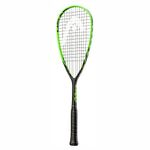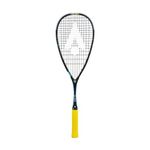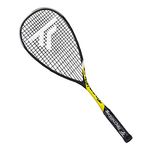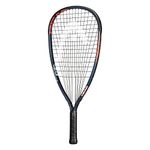10 bestSquash Racquetsof January 2026
112M consumers helped this year.
1
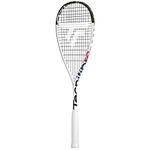
Tecnifibre Carboflex X-TOP 125 Squash Racquet (12CAR125XT)
Tecnifibre

9.8
2
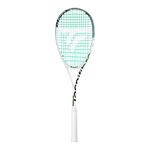
Tecnifibre Slash 120 Squash Racquet
Tecnifibre

9.6
3
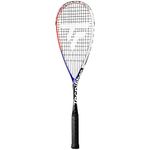
Tecnifibre Carboflex Airshaft 125 Squash Racket
Tecnifibre

9.3
4
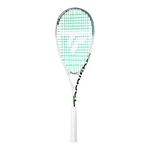
Tecnifibre Slash 125 Squash Racquet
Tecnifibre

9.1
5
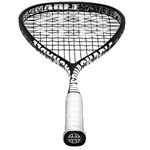
UNSQUASHABLE Y-TEC PRO Squash Racket Series - Lightweight with Headlight Balance Y-TEC PRO 125g, Y-TEC 125g & Y-TEC Power Racquets - Ultimate Pro-Player Power for All Standards of Squash Players
Unsquashable

8.8
OtherUp to 10% off
6
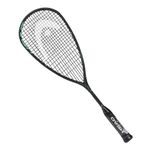
HEAD Speed 120 SB 2023 Squash Racquet
HEAD

8.5
7
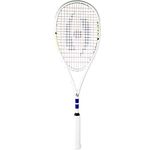
Harrow Vapor Ultralite Squash Racquet

8.2
8
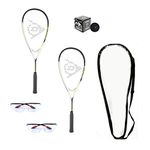
Dunlop Sports Beginner Squash Racquet Set (Includes 2 Racquets, 2 Eyeguards, 1 Ball, Cover)
Dunlop Sports

8.0
9
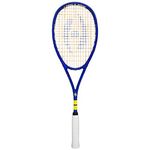
Harrow Vapor Squash Racquet (2019)
Harrow

7.7
10
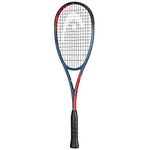
HEAD Graphene 360+ Radical 120 Slimbody Squash Racquet - Even Balance SB Racket
HEAD

7.4
A Guide to Selecting the Best Squash Racquets
Choosing the right squash racquet can make a big difference in your game, whether you’re a beginner or an experienced player. The best racquet for you depends on your playing style, skill level, and physical comfort. When shopping for a squash racquet, it’s important to understand the main features that affect performance and how they relate to your needs. By focusing on the key specifications, you can find a racquet that feels right in your hand and helps you play your best.
Weight
The weight of a squash racquet is how heavy it feels in your hand and is usually measured in grams. This is important because it affects how fast you can swing the racquet and how much power you can generate. Lighter racquets (typically under 140 grams) are easier to maneuver and are good for quick reactions and fast play, making them suitable for players who like to volley and play at the front of the court. Heavier racquets (over 150 grams) provide more power and stability, which can help players who prefer a slower, more controlled game or who need extra help generating power. If you’re new to squash, a mid-weight racquet (around 140-150 grams) is a good starting point, as it offers a balance between control and power.
Balance
Balance refers to how the weight is distributed along the racquet, and it can be head-heavy, head-light, or evenly balanced. Head-heavy racquets have more weight towards the top, which helps generate more power in your shots but can feel less maneuverable. Head-light racquets have more weight towards the handle, making them easier to control and quicker to move, which is great for fast rallies and defensive play. Evenly balanced racquets offer a mix of both power and control. To pick the right balance, think about your playing style: if you like powerful shots, go for head-heavy; if you value quick reactions and control, head-light is better; and if you want a bit of both, choose an even balance.
String Pattern
The string pattern is the way the strings are arranged on the racquet’s head, usually described by the number of main and cross strings. A more open string pattern (fewer strings) gives you more power and spin but can wear out faster, while a denser string pattern (more strings) offers better control and durability. If you’re a beginner or prefer control, a denser pattern is helpful. If you want to add more power or spin to your shots, an open pattern might suit you better.
Head Size
Head size is the area of the racquet’s hitting surface, measured in square centimeters or inches. A larger head size gives you a bigger sweet spot, making it easier to hit the ball well and forgiving off-center hits, which is great for beginners or players who want more power. A smaller head size offers more control and precision, which advanced players might prefer. If you’re just starting out or want more power, go for a larger head; if you’re confident in your accuracy, a smaller head can give you more control.
Grip Size
Grip size is the thickness of the handle, and it affects how comfortable the racquet feels in your hand. A grip that’s too small or too large can make it hard to control the racquet and may cause discomfort or even injury. Most squash racquets come with a standard grip size, but you can add overgrips to adjust the thickness. To find the right grip, hold the racquet and see if you can wrap your fingers comfortably around the handle without overlapping your thumb. Comfort and control are key, so choose a grip size that feels secure and natural in your hand.
Best Reviews Guide Newsletter
Get exclusive articles, recommendations, shopping tips, and sales alerts
Sign up for our newsletter to receive weekly recommendations about seasonal and trendy products
Thank you for subscribing!
By submitting your email address you agree to our Terms and Conditions and Privacy Policy

